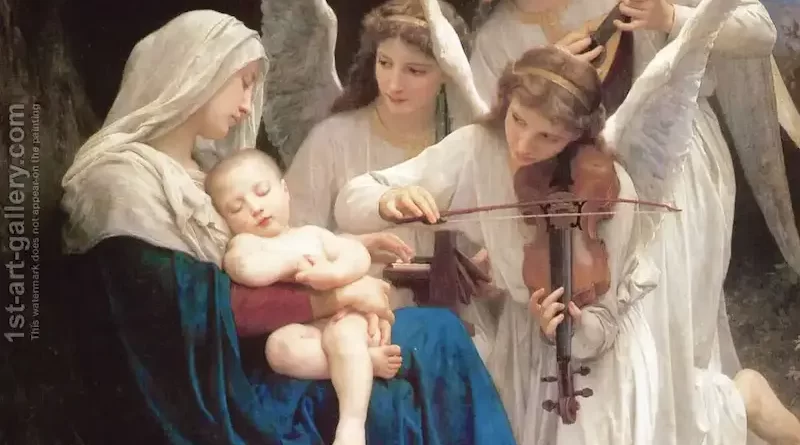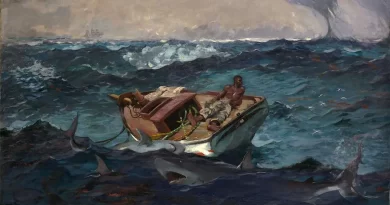Angel Painting: A Classic That Will Never Go Out of Style
Angel painting has been part of the arts for centuries. It can be found in early Christian and Islamic art, and they have always been famous subjects for Byzantine and European paintings.
During the Italian Renaissance, many famous angel paintings were created. The tradition of painting angels continued into the Romantic Period, and many modern artists still use the angel- theme from time to time. Famous angel paintings are clearly a type of art that will never go out of style.
Most people nowadays have the popular “picture” of how angels look originated in the 4th century. However, angel-like figures can be traced back to more than thousands of years, and new depictions will certainly be developed in the future. In this article, we’ll look at how angel painting and the depiction of angels have developed and changed over the centuries and why we say it will never go out of style.
Beginning of Angel-like Figures in Art
The Lamassu was one of the earliest examples of angel-like creatures in art. A Lamassu, also known as a “winged bull,” was a deity in ancient Assyrian culture. When depicted in art, it comprised a human’s head, a lion’s body, and large, feathered wings. A pair of sculpted Lamassu was usually placed at the entrances to palaces. Examples date as far back as the 10th century BC.
Eros and Nike were two figures with wings in ancient Greece. According to Greek mythology, Eros is the son of Aphrodite and the god of love. During the Classical Art period (510 – 323BC), he was always depicted as an adolescent with enormous wings. The Roman Cupid is the equivalent of Eros and has always been – up to today – always depicted with wings.
From 323 BC to 31 AD, marble sculptures were very popular during the Hellenistic period. Many scupltures crafted statues of the gods with wings. An 18-foot sculpture from the second century BC portrays Nike, the Greek goddess of victory who is depicted with flowing drapery and colossal wings.
Old Angel Paintings
Old paintings of angels and drawings of angels created during the third century AD depict Biblical angels without wings. The “Catacomb of Priscilla” was used in the third century, and the first artistic interpretation of an angel can be found in this catacomb.
As part of wall paintings in the catacomb illustrating scenes from the Old and New Testaments, some frescoes tell the story of the Annunciation. The Annunciation is the biblical event where the angel Gabriel announced Mary would be the mother of the Son of God. In this fresco, Gabriel is an angel without any wings.
The first known work of art depicting angels with wings after the 3rd century AD is the relief carvings on a marble coffin found in Turkey. This coffin is known as the “Prince’s Sarcophagus” and dates back to the 4th century. The winged angels on the coffin are among many depictions of winged angels in Byzantine art.
Angel Paintings in the Middle Ages
Medieval artists also depicted angels with wings, as the Byzantine artists had done. These flying angels painted in the Middle Ages can often be seen floating in the background of scenes. One good example is where the Virgin Mary and Jesus sit in the foreground in Pietro di Domenico da Montepulciano’s painting “Madonna and Child with Angels”.
Renaissance Angel Paintings
Italian Early Renaissance artists often included winged angels in their paintings. But the style of painting was changing. The angels were still depicted with wings, but despite the wings, the angels began to look more “earthy” and less ethereal.
This move away from the medieval idea of angels started when the High Renaissance artists became interested in naturalism. An excellent example of this shift to more earthy-like angels is Fra Filippo Lippi’s “Madonna with Child and Two Angels”.
Angel Renaissance paintings were also created by Northern Renaissance artists such as Jan Van Eyck. But where the Italian Renaissance painters depicted angels with ivory or golden wing feathers, the Northern Renaissance artists depicted the angels with wings in striking rainbow colors.
Angel Paintings in the Neoclassicism and Modernism Art Periods
The Neoclassical artists developed the naturalistic ideas of the High Renaissance further and painted “naturalistic” angels. The angels in Neoclassical artists’ paintings evoked the same down-to-earth quality of Renaissance paintings.
But there was a shift in style again. Renaissance artists usually painted angels only in biblical depictions. Neoclassical painters, however, featured angels also in mythological iconography and allegorical scenes. This trend was started by Classical artworks such as William Bouguereau’s well-known “Birth of Venus”. Modernists in the 20th century also often featured angels in their art.
Angel Paintings in Contemporary Art
A clear indication that angel painting will not go out of style is that contemporary artists are still continuing the tradition of creating angel paintings. Contemporary artists’ interpretations, however, are more individualistic than in earlier art periods.
Every artist creates unique angel figures. Keith Haring, for instance, created expressive line drawings of angels, and Anselm Kiefer’s neo-expressionist “Angel” series illustrates how different angels can be depicted in art.
Examples of Famous Angel Paintings illustrate that Angel Painting was always “in Style”
Although all famous artists have created artworks about angels, a few of these paintings will always be regarded by most art lovers and scholars as “unforgettable.” Two examples are Raphael’s “The Sistine Madonna” and “St. Francis of Assisi in Ecstasy” by Caravaggio. “Jacob Wrestling with the Angel” by Rembrandt van Rijn is probably the most “unforgettable” depiction of this biblical story.
Conclusion
When we look at all the depictions of angels and angel-like creatures in paintings and realize that the depictions have consistently, over the centuries, changed in step with the broader change in art styles, we can understand why art historians believe that angel painting will never go out of style. For instance, Keith Haring and Anselm Kiefer are two contemporary artists using angels in a neo-expressionist way.




